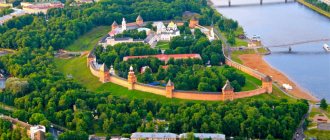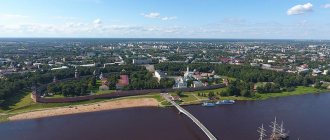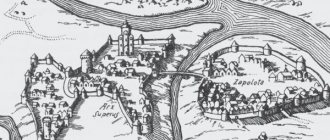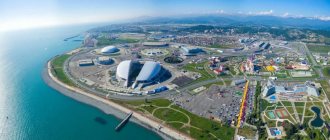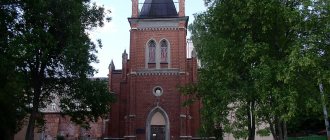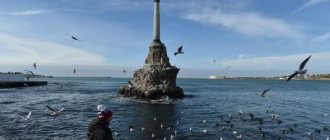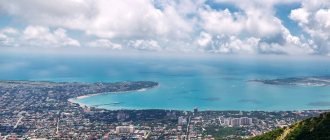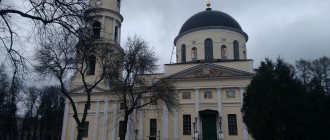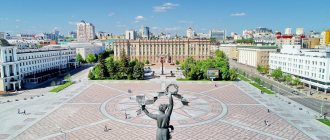To find out how mighty Russia was born, you must definitely visit Veliky Novgorod, whose history goes back centuries. Scientists cannot yet accurately name the date of its foundation, but the fact that a magnificent polis already existed at the turn of the 8th-9th centuries, when no one knew about Moscow, Yaroslavl or Vladimir, is beyond doubt. It was here, on the banks of the Volkhov, that Russian statehood was born, it was from here that Rurik was called to reign, and it was the Novgorod veche republic that was the first Slavic analogue of ancient democracies. The sights of Veliky Novgorod are unique. The city was not plundered by the armies of the Golden Horde, so many monuments of ancient Russian religious architecture remained here.
What to see in Veliky Novgorod in 1 day
The sights of Veliky Novgorod, photos and descriptions of which are presented in this section, are known to many Russians from illustrations in history textbooks. Getting acquainted with the city should begin with their inspection.
Saint Sophia Cathedral
- Opening hours: daily, from 8:00 to 20:00.
- Telephone.
- Address: Novgorod Kremlin, 15. Transport stop "Victory Square-Sofia".
The Novgorod St. Sophia Cathedral, slightly smaller in size than the Kyiv church, is magnificent and austere. Since 1050, services have been held within the walls of the church, and the ringing of its bells on Christian holidays can be heard far beyond the Kremlin. The exterior of the snow-white cathedral amazes with its impeccable proportions. The five-domed temple looks ascetic and festive at the same time. Having walked inside the church through the bronze Korsun Gate, covered with beautiful reliefs, visitors find themselves in a hall painted with marvelous frescoes. Some of them have survived from the 12th century. Among the many ancient relics of Sofia, there are several shrines that thousands of pilgrims are eager to worship. These are the miraculous images of the Mother of God “The Sign” and “Theotokos of Tikhvin”, the relics of St. Anna, princes Mstislav, Fyodor, Vladimir.
Novgorod child
- Opening hours: daily, from 6:00 to 24:00.
- Address: Transport stop “Ploshchad Pobedy-Sofyskaya”.
By the beginning of the 11th century. Veliky Novgorod turned into a prosperous trading city, whose wealth was envied by many neighbors. That is why Prince Vladimir Yaroslavich ordered to build a fortress with oak walls on the hill, where the townspeople could hide from enemy attacks. After Novgorod became part of the Moscow Principality, the Kremlin was reconstructed. The new brick walls, erected towards the end of the 15th century, have a thickness of 3.5 m to 6.5 m with a height in some places reaching 15 m. Their total length is almost 1.5 km. Nine powerful towers have survived to this day. On the territory of Detinets there are 4 churches, several ancient buildings, historical and architectural monuments.
Monument to the 1000th anniversary of Russia
- Address: Transport stop “Ploshchad Pobedy-Sofyskaya”.
To celebrate the 1000th anniversary of the emergence of Russian statehood, the imperial authorities decided to erect a grandiose monument in Novgorod, where Rurik and his retinue were called to reign in 862. The announced competition was won by the project of M. Mikeshin, the creator of the monument to Catherine II in St. Petersburg. Work on the bronze sculpture was completed in 1862. The monument turned out to be majestic and incredibly expressive. It has the shape of a bell, crowned with an orb on which beautiful Russia knelt before an angel holding a cross in her hands. The middle part of the monument is surrounded by 6 sculptural groups, symbolizing the most important milestones in the history of Rus' - from the arrival of Rurik in Novgorod to the creation of the great empire by Peter I. The frieze is covered with stunning high reliefs depicting the great Russian rulers, generals, public figures, scientists, and writers.
Yaroslav's yard
- Address: Transport stop “Ulitsa Ilyina”.
Yaroslav the Wise reigned in Novgorod for about 10 years, and, judging by the chronicles, he lived in a luxurious palace, which has not survived to this day. In the 11th century The shopping arcades and the famous bell, which called the townspeople to the veche square, were moved to the territory of the princely courtyard. He was here until the conquest of the city by Ivan III. Walking around the courtyard, tourists can admire the arcade of the Gostiny Dvor, the St. Nicholas Cathedral, delightful ancient churches, historical buildings, monuments, and visit the sacred place where the Novgorod veche gathered for centuries.
Rurik's Settlement
- Address: Gorodishche, 2.
The settlement is one of the archaeological monuments and dates back to 862. At that time, the residence of the first prince of this famous dynasty was located here. The ancient city has long been the center of the political history of the principality. Alexander Nevsky spent his entire childhood here, Vasily Temny, Dmitry Donskoy, Ivan the Terrible stayed more than once. In its center are the ruins of the Annunciation Church, which have survived to this day, which was erected in 1103 on the orders of Mstislav the Great. It was rebuilt only once - in the 14th century.
Don't miss: Beautiful Novgorod region
Attractions. Novgorod Kremlin - Detinets.
Novgorod Detinets (also Novgorod Kremlin) is a monument of Russian military-defensive architecture of the 15th-17th centuries, located on the left bank of the Volkhov River. The first chronicle mention of it dates back to 1044. It is an architectural monument of federal significance and is protected by the state. The Novgorod Detinets, as part of the historical center of Veliky Novgorod, is included in the UNESCO World Heritage List. Since its foundation it has been the political, religious and cultural center of the Novgorod land. Here is the oldest temple in Russia - St. Sophia Cathedral, the monument "Millennium of Russia", the oldest civil building preserved on the territory of Russia - the Vladychnaya (Faceted) Chamber. Of the 12 towers that existed in Detinets in the 15th century, nine have survived: Dvortsovaya, Spasskaya, Knyazhaya, Kokuy, Pokrovskaya, Zlatoustovskaya, Metropolitan, Fedorovskaya and Vladimirskaya.
Architectural places and beauties of Novgorod
The ancient city is famous not only for its temples. Over its long history, it has acquired many architectural landmarks. In this section you will learn about what you should definitely see in Veliky Novgorod.
Arcade of the Gostiny Dvor
- Address: Territory of Yaroslav's courtyard. Transport stop "Ulitsa Ilyina".
Already by the beginning of the 10th century. Novgorod has become the largest shopping center in northwestern Russia. It was actively visited by merchants from overseas countries, who needed to be warmly received. Therefore, even under Yaroslav the Wise, the shopping arcades were moved from the settlement of the same name to the princely courtyard. At the turn of the 17th-18th centuries, a stone square-shaped guest courtyard and a Gate Tower grew in their place. Unfortunately, during the Second World War, many buildings of the princely court were seriously damaged. Then the city authorities showed vandalism, ordering the Gostiny Dvor building and several churches to be dismantled into bricks. This barbarity stopped only in 1956 after the intervention of the USSR Academy of Sciences. Subsequently, only part of the delightful arcade of the gallery was restored from the ruins, which can be admired today.
Belfry of St. Sophia Cathedral
- Address: Novgorod Kremlin, 5. Transport stop "Victory Square-Sofia".
A unique architectural monument of the 15th century. amazes with its grace. It is a stone wall 22.5 m long and 3.4 m wide, divided by five elegant arches in which bells are suspended. Medieval architects often used this technique to place several large bells in space at once, which was impossible to do in the limited space of an ordinary bell tower. Here tourists will be able not only to admire the amazing structure, but also to view an exhibition of bells cast in the 16th-20th centuries. The largest of them weighs 1614 pounds. Those who wish will be able to admire the panoramic views from the belfry in the summer by paying 50 rubles.
Clock ringing
- Address: Novgorod Kremlin, 12.
We are talking about a tower on the territory of the Kremlin, in which a clock is mounted. It is its tallest building today. The clock ring is especially interesting to tourists because it has a fairly noticeable slope to the northwest.
Previously, it was the bell tower of the Church of St. Sergius of Radonezh, which was once located here. During the Second World War the tower received a lot of damage. It was completely restored only in the 1980s.
Today it consists of kokoshniks in several tiers, as well as an onion dome. Now it has an electric clock built into it, which, however, is set in such a way that it continues to strike a bell, which dates back to 1647, every 30 minutes.
Victory Monument
- Address: Ekaterininskaya Gorka. Transport stop "Trinity Street".
To coincide with the celebrations of the 30th anniversary of the liberation of Novgorod from the Nazis, the authorities timed the opening of a monument glorifying the great Victory and the feat of the people who secured it. The architectural composition consists of two elements. The 23.5 m high brick stele is crowned by a Novgorod boat with shields on its sides, bristling with spears. There is an equestrian sculpture on the pedestal in front of the stele. A horseman with a sword in his hand tames a rearing horse, trampling a swastika with its hooves.
Monument to the militia of 1812
- Address: st. Great. Transport stop "Ulitsa Chudovskaya".
During the Patriotic War of 1812, the Novgorod militia covered itself with military glory, causing significant damage to Napoleon's armies. In memory of the heroes, in the summer of 1840, an obelisk topped with a gilded double-headed eagle was installed in the center of Detinets. Bronze bas-reliefs depicting shields, armor, and other attributes of military glory were attached to the sides of the pedestal, and a commemorative inscription was carved on its front side. Unfortunately, after the revolution, the monument was destroyed for “ideological reasons.” However, in 2012, the obelisk was restored based on the surviving images.
Church of the Intercession of the Blessed Virgin Mary.
The Church of the Intercession of the Blessed Virgin Mary is located in the western part of the Kremlin, closely adjacent to the eastern facade of the Kremlin wall and the Intercession Tower. The first chronicle mention dates back to 1305, when the mayor Semyon Klimovich erected a stone church at the gate from Prusskaya Street (that is, the church was above the gate, attached to a wooden tower). In 1389, by order of mayor Grigory Yakunovich, the old church was dismantled and a new temple was erected in its place.
Sculptural compositions and monuments of Veliky Novgorod
There are a lot of sculptures and various memorable compositions in Novgorod; as a rule, they become objects against which excellent photos are obtained. Let's look at the best of them.
Monument to Car Mechanic
- Address: Studencheskaya st., 31.
It is located near the central entrance of the city taxi park. It is a structure 5 meters high, created from things that car mechanics most often work with. In it you can see fragments of engines, old wheels, gearboxes and more. Its shape is similar to another city monument, which is dedicated to the 1000th anniversary of Russia.
Monument to the Girl-Tourist
- Address: Kremlin Bridge.
Located near the pedestrian bridge. Today there are two versions of who it is dedicated to: a tourist or a resident of Veliky Novgorod. Nowadays this is one of the most favorite places among tourists for selfies and photos. There was also a tradition of throwing a coin into a girl’s shoe to attract happiness and good luck. Dmitry Medvedev, who participated in the festivities dedicated to the 1150th anniversary of the city, also took photos near the landmark.
Monument Bear on a bench
- Address: Trade side, Alexander Nevsky embankment.
Installed near a shopping mall. The legend at the monument is that the beast came to the city to look at the local residents and stayed here, since the townspeople really liked him and in the end he decided to stay here. You can admire it not only while walking along the Nevsky embankment. Pleasure boats also sail near the memorial sign. If you want, you can just sit nearby and dream.
Monument to the Moidodyrov family
- Address: Alexander Korsunova Ave., 30.
A monument dedicated to the famous hero Chukovsky is found near the City Bath No. 7. His composition consists not only of the main character, but also of his wife and child. The baby's stroller also plays the role of a bench. The author of the sculptural composition was a master from Veliky Novgorod - Kornilov. And iron was chosen as the material for it, so as not to give amateurs a reason to steal non-ferrous metal.
Monument to Monter
- Address: Builders Square.
The sculptural composition is located in a park near the Polytechnic College. Its author at one time was the sculptor Borovykh, who cast it by order of businessman Sumarokov. The monument represents a worker-fitter in the process of work. It was as if he had climbed onto the pole to remove the cat from it.
Video about the city
Excellent video about Novgorod and the Novgorod region - Russia, Genius loci:
Interesting routes with Veliky Novgorod:
- Veliky Novgorod is an interesting tourist point on the route St. Petersburg - Moscow. The fast Lastochka goes here from St. Petersburg and from Chudovo (1 hour), one of the rare stops of Sapsan. Therefore, visiting it can be combined with a trip to Tver and Torzhok.
- From Veliky Novgorod it is convenient to travel to Pskov (from 3.5 hours by train) and see the sights of the Pskov region.
If you have not yet chosen where you will live and want to save money when booking, we recommend using the RoomGuru service. Firstly, it contains hotels, apartments and guest houses from many different booking systems, so you won’t miss out on a worthwhile option. Secondly, you can immediately compare prices for one place in different services and book where it is cheaper (this is not always Booking!).
Where to go with a child in Veliky Novgorod
Young travelers who come to Novgorod with their parents will definitely not be bored. There is a lot of entertainment for children of any age. Vivid impressions and a great mood for your beloved child are guaranteed.
Trinity excavation
- Opening hours: daily, from 9:30 to 19:00.
- Ticket price: 50 rub. for all.
- Address: st. Trinity. Transport stop "Trinity Street".
Visitors to an excavation site operating right within the city have an excellent opportunity to feel like real archaeologists. Work here has been ongoing continuously for almost 40 years. During this time, scientists were able to discover the remains of about 20 different buildings dating from the 10th-15th centuries. Over 400 birch bark documents and many unique artifacts were found on the excavation site, the most valuable of which is the Novgorod Codex of the 11th century. Many experts consider it the oldest Russian book. In the pavilion you can view an exhibition telling about the object, the history of its research, and the main findings. Those who wish are invited to go down into the excavation site and be transported to the 11th century, because archaeologists are now working with the cultural layer of this period. A teenager will definitely enjoy the excursion.
Children's Museum Center
- Address: Studio Town 3.
The center has become a venue for all kinds of personal exhibitions of local artists, mainly those dedicated to children. For this purpose, three exhibition halls are constantly open here.
The center organizes educational excursions for children every week. There is also a club here, which hosts numerous master classes on various types of crafts. The best local artisans are invited to carry them out.
The complex has also become a place where all kinds of folklore programs are held. As a rule, they are timed to coincide with various national holidays. During festivities, they often practice educational and entertaining games.
Kokui Tower
- Working hours: five days a week, except Monday and Thursday, from 12:00 to 20:00.
- Ticket price: adult 150 rubles, children 100 rubles.
- Website: https://novgorodmuseum.ru/muzej-zapovednik/velikij-novgorod
- Address: Novgorod Kremlin, 8. Transport stop “Victory Square-Sofia”.
Children and parents will enjoy an excursion to the Kokuy Tower. The five-tiered structure, topped with a 10-meter tent dome, rises 38.5 meters above the ground. For centuries its thick walls reliably protected the shooters, who showered bullets and arrows on their enemies from the loopholes. In peacetime, on the top floor of the tower there was a post from which sentinels inspected the city and the immediate surroundings. Today this can be done using telescopes with 60x magnification. The tower houses a colorful exhibition telling about the eventful history of the Novgorod citadel.
Novgorod Kudesy
- Ticket prices and event schedules should be confirmed by phone.
- Telephone.
- Website: https://www.kudesynov.ru
- Address: Voskresensky Boulevard, 9.
If you are traveling as a family, be sure to take your child to a colorful performance performed by the youth folk group "Kudesy", known far beyond the borders of Novgorod. Colorful performances performed by young artists help you get acquainted with the original culture of the north-west of Rus', learn a lot of interesting things about the customs of the Slavs who settled on the banks of the Volkhov since ancient times. The center’s team successfully tours the cities of the country and is invited to the most authoritative folklore festivals.
Read about interesting places:
- Vologda, Pskov, Naryan-Mar, Syktyvkar,
- Arkhangelsk, Petrozavodsk, Murmansk, Staraya Russa,
- Veliky Ustyug, Borovichi, Kaliningrad, Valdai.
If you are interested in Russian history and know how to appreciate beauty in its natural and man-made manifestations, be sure to visit Veliky Novgorod. A vacation spent at the origins of Russian culture and statehood will be remembered for a very long time.
Museums
Center for Musical Antiquities of V. I. Povetkin
Address: Ilyina st., 9B Opening hours: 14.00-16.00, closed on Monday Ticket price: 200 rubles Telephone:
The museum displays a collection of musical instruments from the 10th to the 15th centuries. Many copies were found and restored by V.I. Povetkin. He was the initiator of the opening of the museum, which took place in 1990.
Here you can not only see harps, whistles, nozzles, etc., but also hear how they sound. The museum works to popularize Novgorod musical culture.
Employees are restoring ancient musical instruments based on preserved written sources and found fragments. A tour of the museum is conducted by musicians who master the art of playing rare instruments.
Novgorod State United Museum-Reserve
Administration address: ter. Kremlina, 11 Information service: Website: https://novgorodmuseum.ru/
This museum is located in the building of the Kremlin Government Offices. The museum received its first visitors in 1865. Under the patronage of the museum-reserve there are hundreds of buildings, among them architectural monuments of the 12th-19th centuries.
The museum exhibits icons of Novgorod masters. Archaeological finds dating from the 9th to the 19th centuries are demonstrated. The history of Novgorod architecture is told. The museum has a collection of decorative and applied arts by local craftsmen. Also on display are original documents that reflect the most significant events in the history of the Novgorod land.
Art Museum
Address: Sofiyskaya square, 2 Opening hours: 10.00-18.00, Thu 13.00-21.00, closed on Friday Ticket price: 120 rubles
The exhibition is based on works by Russian painters of the 17th-20th centuries. In addition to paintings, the museum exhibits sculptures, miniatures, and drawings. Most of the collection was formed as a result of confiscation from noble houses after the 1917 revolution.
The pride of the museum is the paintings of I. Shishkin, I. Levitan, K. Bryullov, large majolica by M. Vrubel, etc.
A separate composition is dedicated to Soviet fine art. Temporary exhibitions are held at the museum site, works from museum collections are exhibited.
Museum of Artistic Culture of the Novgorod Land
Address: Desyatinny lane, 3 Telephone: Ticket price: 100 rubles Website: https://artmus.natm.ru/
The first exhibition took place in 1994. The main task of the museum is to position contemporary Novgorod art (late 19th -21st centuries).
The museum presents an exhibition of “Kuznetsk porcelain” and reveals the secrets of its production. Museum visitors are immersed in the production atmosphere of creating porcelain products. Master classes are held.
Iron Museum
Address: Yuryevskoe highway, Vitoslavlitsy Telephone: Ticket price: 100 rubles
The museum has 200 exhibits. The collection features irons dating back to the 17th century.
Not only antique Russian irons are demonstrated, but also those made in Germany, America, and Thailand. The size and appearance of irons are significantly different from modern ones.
The Sovereign or Faceted Chamber.
The Vladychnaya or Faceted Chamber of the Novgorod Kremlin is one of the most interesting buildings of the once large complex of structures of the medieval Vladychny court. Construction work was carried out by order of Archbishop Euthymius in the 30s of the 15th century, as evidenced by references in ancient chronicles. The image of the chamber and foreign master builders was preserved in a chronicle miniature of the 16th century. Initially, the Vladyka's Chamber, built of brick, was surrounded by an open gallery, typical of Gothic buildings, it was illuminated by high lancet windows, and portals with a bowed pediment led into the interior. The paintings were completed in 1441. Unfortunately, in the following centuries, the building, both outside and inside, underwent significant changes.
Ensemble of Yaroslav's Court.
If the architectural center of the Sofia side of Novgorod has always been and remains to this day Detinets, then on the Trade Side this kind of role to a certain extent belonged to the architectural ensemble of the Yaroslav's Court. A small territory, known for a long time in the Novgorod chronicles under the name of the Prince, or Yaroslav's court. The courtyard is located on the right bank of the Volkhov opposite the southern half of the Detinets. Judging by the name, the emergence of this court dates back to the middle of the 11th century. In the Novgorod chronicles, the Yaroslav's court under the name of the "Prince's Court" is mentioned for the first time in 1113 in connection with the construction of the princely church of St. Nicholas here. The name “Yaroslav’s Court” first appears in the chronicles in 1208.
